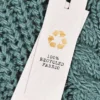You can contact us 24/7 447771208062
Fashion is fun. If you’ve ever seen a makeover montage in an ’80s movie, you’re well familiar. Trying on, buying, and keeping clothes to reflect our various moods fulfills complex human needs for comfort and individual expression—as well as for consumption.
Anita Balchandani is a senior partner in McKinsey’s London office, Achim Berg is a senior partner in the Frankfurt office, Gemma D’Auria is a senior partner in the Milan office, Clarisse Magnin-Mallez is a senior partner in the Paris office, and Patrick Simon is a senior partner in the Berlin office.
Fashion is also serious business. In 2023, the global industry was estimated to be worth $1.7 trillion. And more than 300 million people all over the world work on clothes, somewhere along the value chain. From 2000 to 2014, clothing production doubled and the number of garments purchased per capita increased by about 60 percent. This is due, in part, to the rise of fast fashion.
Fast fashion retailers move, well, faster than their traditional counterparts. This means that they compress production cycles and turn out up-to-the-minute designs, enabling shoppers to not only expand their wardrobes but also refresh them quickly—and cheaply. And shoppers, it turns out, love a new look: according to the recent The State of Fashion 2024 report, published by Business of Fashion and McKinsey, 40 percent of US consumers and 26 percent of UK consumers have shopped at fast fashion giants Shein or Temu in the past 12 months. If you include other fast fashion retailers, the number would likely be much larger.
For all the growth it generates, the fast fashion industry is also responsible for considerable waste. Fast fashion consumers are quick to throw clothes away: some estimates suggest that consumers treat the lowest-priced garments as nearly disposable, discarding them after only seven wears. For every five garments produced, the equivalent of three end up in a landfill or are incinerated each year. And total greenhouse gas emissions from textiles production clock in at 1.2 billion tons a year—that’s more emissions than those emitted by all international flights and maritime ships combined. Reports also indicate that some clothing factory workers are underpaid and exposed to unsafe workplace conditions.
The true costs of fast fashion are coming into focus, especially for millennials and Gen Z. Young people are becoming more mindful of sustainability with respect to how they consume. They’re also keenly aware that the fashion industry is a major contributor to global warming. And they’re walking the talk too: half of Gen Z shoppers in China, according to a recent survey about sustainable consumption, said they aimed to buy less fast fashion.
What is ultrafast fashion?
If fast fashion retailers speed up traditional product cycles, ultrafast fashion moves even faster. Back in the 1990s, the Spanish retailer Zara was one of the first fast fashion retailers to break the mold, offering hundreds of new items per week. As of 2023, the Chinese ultrafast fashion retailer Shein consistently churns out up to 10,000 new designs a day. And Shein’s products are, on average, significantly less expensive relative to the company’s more established fast fashion counterparts: Shein’s average SKU price is $14, compared with $26 at fast fashion retailer H&M and $34 at Zara.
Shein grew dramatically during the pandemic. Due in part to a surge in online sales and digital adoption rates, the company more than doubled its market share in the United States during that time; it’s now the second-most-popular shopping website among America’s Gen Z (after Amazon). In a 2022 funding round, Shein’s value was set at $100 billion (in 2023, it reportedly dropped to $66 billion, likely in anticipation of increased regulation).
How are fast fashion companies evolving the business model?
Ultralow prices are critical to the success of the fast fashion business model, as are condensed turnaround times. Upstart fast fashion retailers such as Shein and Temu are updating the model in the following ways:
- Agile, scalable manufacturer-to-consumer supply chains. Some next-generation fast fashion companies have developed large networks of suppliers who often manufacture exclusively for these companies.
- Data-driven product design and testing. Shein, for instance, uses demand-driven trend modeling to design and select its products. This includes a range of data inputs from current trends to viral products to customer perception.
- Loyal and growing customer bases. These are fed by affiliate marketing influencer programs and organic social community building, which lower customer acquisition costs.
- High app adoption rates and engagement tactics. Companies have gamified their app experiences, allowing customers to earn loyalty points by setting up accounts, leaving reviews, watching live streams, and more.
How are fast fashion organizations addressing sustainability concerns in their C-suites?
One way fashion companies, fast and otherwise, are preparing for the sustainability challenges ahead is by restructuring their C-suites. According to McKinsey’s State of Fashion 2024 report, the C-suite teams at almost all of Europe’s 25 biggest fashion companies include at least one executive with environmental, social, and governance experience. These executives oversee a series of sustainability strategies, from shrinking their companies’ carbon footprints to reducing waste to improving labor relations.
The brands that execute sustainability strategies most successfully incorporate sustainability components into existing roles rather than create entirely new ones. For example, the UK-based fast fashion retailer Primark put Michelle McEttrick, the company’s first chief customer officer, in charge of leading sustainability strategy. And success as a sustainability executive can open doors to the top job, as in the case of Helena Helmersson, who was appointed CEO of H&M in 2020 after serving as the company’s head of sustainability.
How can the textile industry make business models more sustainable?
Many fast fashion players are considering how to make their business models more circular, in response to climate pressures and a quickly evolving regulatory landscape. In a circular model of value creation, resources are deployed over and over. Conversely, a traditional linear model begins with extraction and concludes with end-of-life disposal, with the expectation that consumers will discard goods and buy more.
Here are a few ways in which fashion companies can work toward complying with changing regulations.
- Improved traceability. Achieving full supply chain visibility across all tiers of manufacturing will be a critical enabler for regulatory compliance. Advances in blockchain and other technologies may help companies to enable more transparent and efficient monitoring. Brands such as Brooks Sports and Renfro Brands have deployed TrusTrace’s digital traceability platform to achieve traceability at scale.
- Sourcing and production. Upstream supply chain activities account for the majority of carbon emissions in the apparel industry, so in the future there may be a sharper focus on decarbonizing the production of materials and garments. Brands may increasingly shift to new suppliers or join strategic alliances. The luxury retail brand Hermès, for example, has partnered with start-up MycoWorks to secure access to its engineered mycelium (a network of fungal threads that can be used to produce a product similar to leather).
- Design. A new emphasis on longevity and durability may demand fresh attention to design details such as stitching and seams. Materials that cannot be separated in recycling may be avoided in the future, meaning designers might have to think more creatively about their design choices.
- End-of-life waste. New business models are coming to the fore to minimize production and waste. Resale continues to grow through brand partnerships with secondhand marketplaces, such as the RealReal and Vestiaire Collective. There is also an opportunity to accelerate closed-loop recycling, a process whereby a product can be used and then turned into a new product many times over. Stockholm-based Renewcell is ramping up the world’s first at-scale fiber-to-fiber recycling factory and is already working with global brands including H&M and Levi’s.
As global business reckons with increasing climate pressures and a changing regulatory environment, the fashion companies that cut new patterns for sustainability are the ones most likely to excel in the future.





